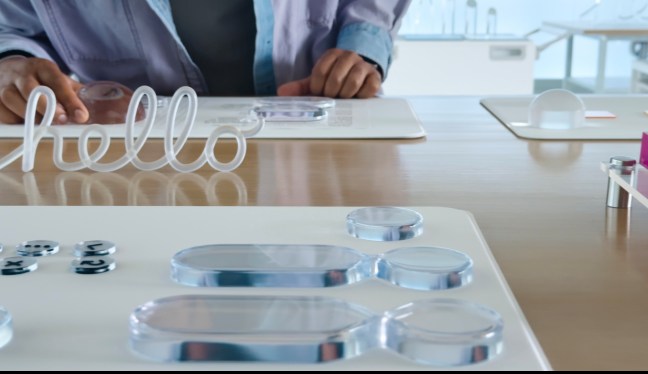Apple’s latest operating system, iOS 26, introduces a new design language called Liquid Glass. This interface makeover, one of Apple’s largest since the shift from skeuomorphic to flat design in 2013, adds a translucent, glass-like material to Apple’s software. This material is used across many iOS elements, including buttons, sliders, media controls, switches, notifications, tab bars, and app sidebars. It also enhances system experiences like the Control Center, Home Screen, and Lock Screen.
The Liquid Glass design is inspired by mixed-reality devices like the Apple Vision Pro. This suggests Apple is preparing for a future where the operating system runs on smart glasses, which the company is reportedly developing. For now, the changes allow for new ways to customize your iPhone. The update supports clear icons, glassy widgets, a glassy typeface for the Lock Screen, and 3D photos.
One of the most significant adjustments you can make is to change your Home Screen icons. With iOS 26, customization has been updated to allow icons that appear as light or dark glass, tinted glass, or even as clear icons. While some users had complaints about tinted icons in iOS 18, the feature has improved with the Liquid Glass design; the tint now feels more subtle. You can use an eyedropper tool to pick an exact color from your wallpaper to match your icons and adjust sliders to tweak the color or its opacity. If you prefer a simpler glassy look, you can set your icons to Clear.
To use this feature, press and hold on your Home Screen and tap on Customize to enter customization mode. Tap the various options to select a light, dark, or automatic background, choose large or small icons, and decide if you want your icons to appear as dark, clear, tinted, or with their default colors. Tap on your Home Screen again when your customizations are complete.
A new option called matched icons allows you to coordinate your iPhone’s icons with your device or case. iOS 26 knows your iPhone’s model and color. To match an official Apple MagSafe case, you can use this feature. To match your icons to your phone, press and hold on your Home Screen to enter jiggle mode, tap Edit, then Customize, and then Tinted. Underneath the color and opacity sliders, tap the button that looks like a small iPhone. To match your case instead, press the next button to the right.
Your Lock Screen wallpaper and your Home Screen wallpaper do not have to match, offering a wide variety of customization options. Before setting a personal photo, consider browsing the web for glass-inspired wallpapers using search terms like Liquid Glass wallpaper or iOS 26 wallpaper. Pinterest remains a good resource for free ideas. You can also use third-party iOS theming apps, though many are subscription-based or ad-supported. Some popular options include Brass, ColorThemes, Screenkit, Themify, Wallaroo, and Widgetsmith.
Home screen customization is also a good opportunity to support a favorite artist. Many artists sell wallpaper packs through Patreon or promote downloads on social media. Searching for iOS wallpaper on sites like X and Threads can provide ideas, and users often showcase their designs on Instagram and TikTok. Remember that iOS 18 introduced the ability to place icons and widgets anywhere on the Home Screen, allowing you to leave blank spaces to show off your wallpaper, though icons remain locked to an invisible grid for order.
Widgets in iOS 26 now have a glassy look-and-feel. Besides using your apps’ built-in widgets, you can turn to third-party resources. Apps like Brass, ColorThemes, Screenkit, Themify, Widgetsmith, and Launcher are popular choices. Other interesting widget apps include MD Studio’s vinyl record player widget and Not Boring’s alternatives to default apps. A recently popular app is Dynamic-Lyrics, which places live lyrics on your Lock Screen, Dynamic Island, or Home Screen.
For creating your own custom widgets, the app Widgy is a major resource. It allows anyone to create a custom widget by adding elements, changing colors and effects, and connecting data sources. You can also browse and import widgets made by others. Some designers sell Widgy widget collections on their own websites. To use a purchased widget, download the zip file to your Apple Files folder or iCloud Drive. Open the Widgy app, go to the Create tab, tap Import, and select import .widgy File from Files. After importing, you can customize the widget further from the Manage tab, setting up transparency to match your wallpaper and configuring its position. Finally, add the widget to your Home Screen by tapping and holding the Home Screen, selecting Edit, then Add Widget, choosing Widgy, and selecting your creation.
On the iPhone’s Lock Screen, Liquid Glass presents the time in a glassy San Francisco typeface. This font dynamically adapts its weight, width, and height based on your screen image and notifications to keep your photo’s subject in view. A standout feature is the new Spatial Scenes, which give your wallpaper a 3D effect. This uses computer vision techniques to turn standard 2D photos into 3D images. You can use older pictures or photos taken with other cameras; a new iPhone is not required.
To use the Lock Screen features, press and hold on the Lock Screen and tap Customize. Browse your photos to select a wallpaper. After adding it, tap the new Spatial Scene button to enable the 3D effect. The button to the right allows you to configure additional wallpaper settings, such as having your wallpaper shuffle through different photos on a schedule or with a tap.

